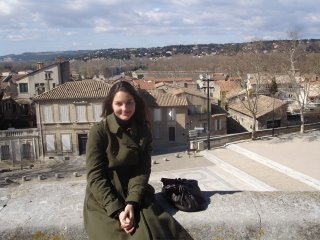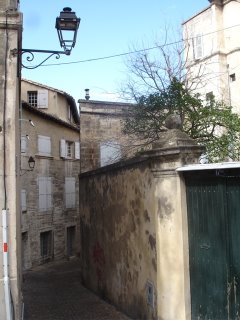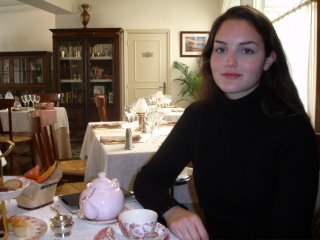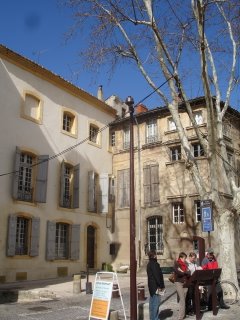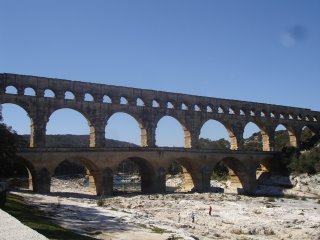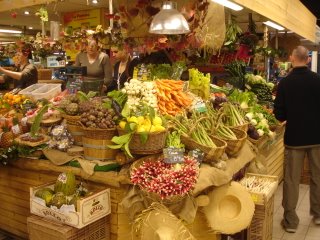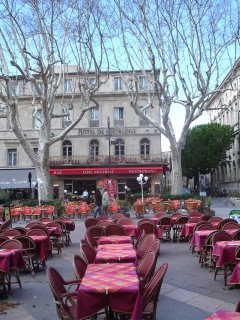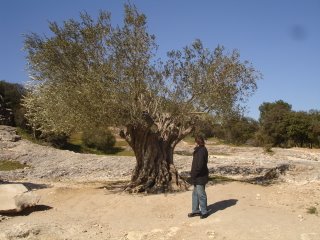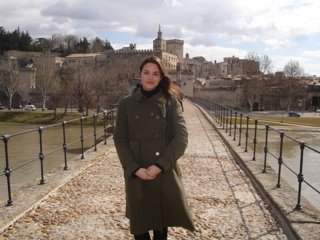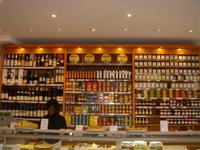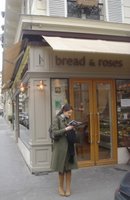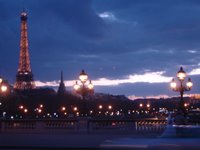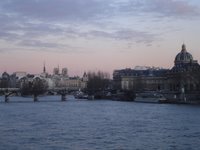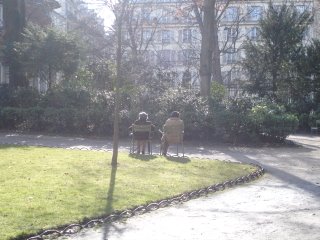
Yesterday I went to see a fantastic exhibit of Wily Ronis’ Paris photographs. It was all the better because, despite his 95 years of age at the time, he was very active in preparing the show. And so both his genius and his personality were imparted on the organization of the works.
At the exhibit there were two elderly Parisian women, each a head shorter than I am. As the photos were arranged chronologically, and as I had entered the exhibit just moments after them, I got to know the women a little as I followed them through the exhibit, photograph by photograph (I also got the know the tops of their heads quite well, which is a detail I will come back to). They stood before each picture for several minutes, faces craned upwards, tracing over the trees and the angles of buildings with their arthritic fingers. For these women, the process of viewing each picture was the same: identify the location in Paris at which the photograph was taken, then try to associate some personal memory with the location. In one instance, for example, there was a picture of a worker strike in the 1930’s. One of the women said to the other, “I remember I met you there that day, the day of the strike. You had your blue vest on!”
-Oh! The blue vest! Yes…oh, I loved that vest. Do you remember the buttons?
“Oh they were incomparable! I wanted a vest just like yours!”
-No one had a vest like that (shakes head slowly, lips pursed pridefully). That’s why it was so special (silence, punctuated by the other woman’s nodding).
Then, arm in arm, they hobbled on to the next picture to play their game of memories.
I was seeing the exhibit along with them, viewing them as much as I was viewing Ronis’ photographs. I was very touched by the notion of two Parisian ladies, presumably in their eighties (at least), going on an excursion together to a photography exhibit; I was touched by the way they helped support each other physically as they walked, and touched by how they supported each other by recalling or clarifying memories (“no, no, your hair was long then, and you had that sweetheart who lived in the 15th, remember?”). It was both beautiful and sweet to see the photographs through my eyes and theirs, but watching them also made me sad.
Their hair was teased and sprayed into what looked like helmets, with a roll of hair turning upward, running down the base of their necks from ear to ear. As I stared at the tops of their heads and listened to them reminisce, it occurred to me that their hairstyle might in fact be a helmet of sorts—-maybe it’s a psychological protection against the relentless coming of years. Maybe when they look in the mirror and see the hairstyle they had in the 60’s, when they were 30 or 40 years old, they feel only the weight of the first few decades of life on their backs, and not all 80 or 90 years of it…
Another thing that struck me about the exhibit was something that Ronis said about why it was that he ever took photographs, and why he took so many of people, often very ordinary, in Paris (and not of more grandiose things such as monuments or buildings):
“Bien sûr que j’aime l’architecture de Paris—c’est ma ville, elle est belle. Mais c’est les gens qui m’intéressent…ce qui m’intéressait c’était de voir mes frères et mes soeurs parisiens et comment ils vivaient…je retrouvais des gens avec qui j’aurais pu vivre, avec qui j’aurais pu converser, qui auraient pu être mes amis, mes voisins; des gens qui m’inspiraient de la sympathie.”
(Of course I adore the architecture of Paris—it’s my city. It’s beautiful. But it’s the people who interest me…what interested me was to see my Parisian brothers and sisters and how they lived…I found people with whom I could have lived, with whom I could have had conversations, who could have been my friends, neighbors; people who aroused sympathy in me)
I believe this to be true. It is for me, in any event. I take pictures of people window shopping, or men laughing in the park, and I note the kind of the light that falls on their faces. I think I do this in order to preserve and to appropriate moments of other people’s lives in which I crave some kind of participation. Maybe I want to feel like the mother and daughter gazing into the windows of stores and to feel the joy that makes the men in the park laugh. All of this is to say that it occurred to me yesterday that my taking of pictures, and my scribbling of notes, is about living moments of other people’s lives, and joining my experience with theirs. It makes me feel larger—-more than "one," anyway.
The women in the picture at the top are not the women I was speaking about--they are two other women I found sitting in a park, chatting about the birds.
